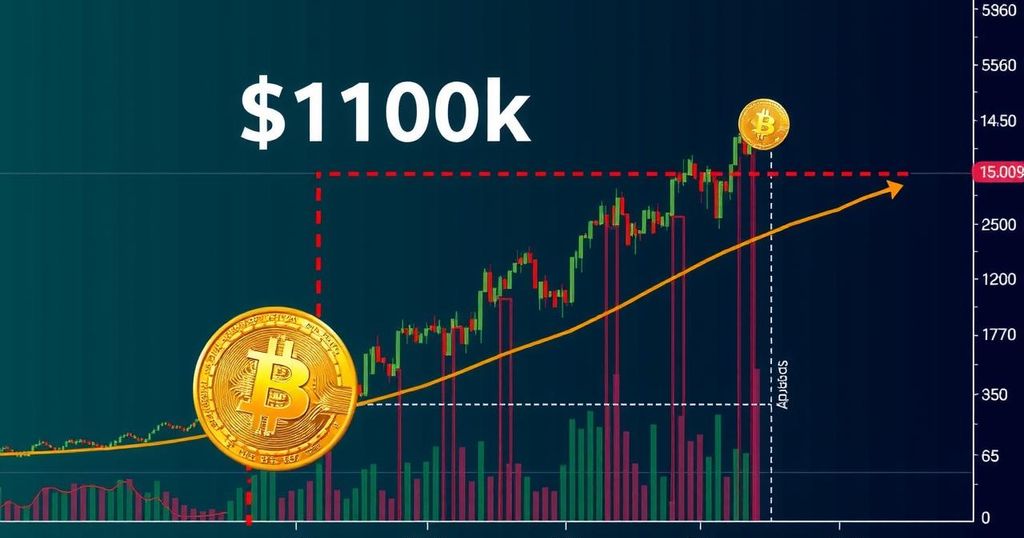Bitcoin Mining Difficulty Hits All-Time High: Implications for Price Trends and Potential Bull Run
Bitcoin’s mining difficulty has reached an all-time high of 95.67 terahashes, marking a 4% rise in 24 hours, amid increasing operational costs for miners. While total mining revenue has surpassed $35 million, it remains below the 365-SMA, indicating potential price volatility for Bitcoin, currently at $66,727. A supportive price level at $66,000 is essential for sustaining a possible upward rally, particularly following historical trends linking miner earnings to price increases.
Bitcoin’s mining difficulty has recently achieved a historical peak of 95.67 terahashes (T), reflecting a notable 4% increase within a 24-hour timeframe. This escalation in difficulty imposes significant pressures on miners as they strive to maintain their operational profitability amidst rising costs. Despite Bitcoin mining revenue remaining below the 365-simple moving average (SMA) since the recent halving, indicators suggest that a potential rally may be on the horizon. Presently, total mining revenue has exceeded $35 million, illustrating a correlation between miner earnings and possible future increases in Bitcoin prices. At present, Bitcoin is experiencing some volatility, with a price of approximately $66,727 and market capitalization reaching $1.32 trillion. Although the price faced resistance at $69,000 and has retraced by 5%, the rising mining difficulty coincides with a historic increase in Bitcoin’s hashrate, which currently stands at over 700 exahashes per second (EH/s). This year, the Bitcoin network has undergone 22 difficulty adjustments, with 13 resulting in increases. The post-halving landscape, following the anticipated reward reduction in April 2024, has seen some minor miners exit the network due to their inability to compete with more efficient operations, resulting in a decline in hashrate. Moreover, recent statistics from Glassnode indicate that from November 2023 to July 2024, over 30,000 bitcoins left miner wallets, marking significant distribution activity. However, since July, a stabilization in miner balances appears evident, suggesting that the remaining miners are better equipped to operate under current market conditions. This consolidation trend may be beneficial to the mining industry, as a larger percentage of control is now held by public miners. A potential Bitcoin bull run is often linked to increasing profitability within the mining sector, and current market trends indicate a substantial rise in miner revenue. Although Bitcoin mining revenues have remained below the 365-SMA, historical data suggests that a reiteration of this figure often precedes significant price rallies. The current price adjustment may present a bearish outlook, yet technical analysis indicates that Bitcoin ought to maintain support around $66,000 to bolster ongoing upward trends.
The relationship between Bitcoin mining difficulty and market dynamics is critical for understanding future price movements. Mining difficulty adjusts approximately every two weeks based on network activity and total hashrate. Higher difficulty signals greater competition among miners, which raises their operational costs. Conversely, increases in miner revenue can indicate more lucrative market conditions, often correlating with subsequent price increases for Bitcoin. The halving event, reducing mining rewards by half, frequently affects miner behavior and market supply patterns, leading to shifts in pricing dynamics. The historical trend suggests that once the miner revenue consistently exceeds certain averages, it typically precedes significant bullish movements in Bitcoin prices.
In summary, Bitcoin’s current mining difficulty has reached an all-time high, demonstrating not only the increasing competition among miners but also the resultant pressure on profitability amidst rising costs. Despite current price volatility and challenges post-halving, signs of potential recovery and revenue increases may indicate that a bullish trend could be on the horizon – particularly if miner revenues surpass established averages. Maintaining support around the $66,000 mark is crucial for sustaining upward momentum, and the evolving landscape of the mining industry illustrates a gradual consolidation among stronger operations capable of weathering the market’s fluctuations. The developing relationship between mining activity and Bitcoin prices warrants close attention, as historical patterns suggest that renewed miner profitability may correlate with significant price advances.
Original Source: www.coinspeaker.com








Post Comment